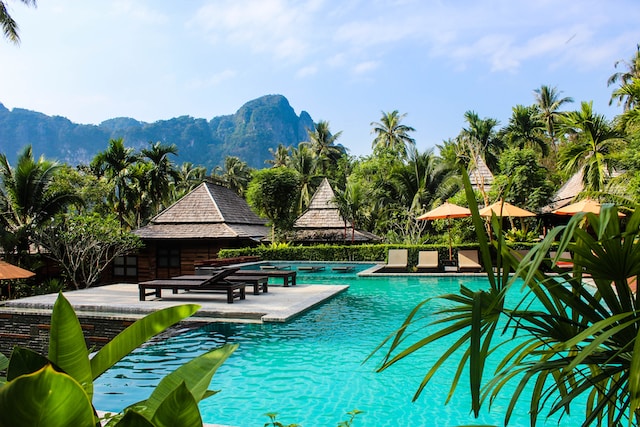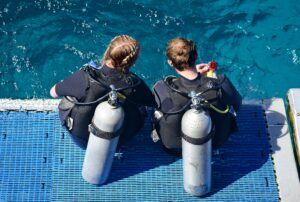Tourism remains Belize’s primary industry, accounting for almost 25% of jobs and 18% of GDP.
Belize is famous for its stunning coral reefs, tropical forests and Mayan ruins. To boost economic development the government has built new hotels and other tourist attractions to attract more visitors.
Credit policy can be an invaluable aid here, encouraging businesses to invest in activities which build national wealth rather than those which only offer temporary returns.
Financing for Hotels and Resorts
As an English-speaking destination near the United States, Belize has become an attractive vacation and homebuying market for American tourists and retirees. Tourism thus constitutes a key subsector of Belize’s economy and contributes significantly to foreign exchange earnings – comprising activities related to hotel accommodations, dining venues and resorts, recreational attractions and travel agencies.
Overnight tourist arrivals to Belize have experienced dramatic increases over the last decade, generally outstripping economic expansion overall. This increase can be seen through tourism revenues per visitor which have steadily been on an upward trend since 1998.
Tourism has also proven an important source of employment in Belize; approximately 16% of Belizeans work in tourism-related fields such as hospitality. This number dwarfs those employed in agriculture or fisheries industries which together account for only around 8%.
Tourism’s development has been greatly supported by several government policies and initiatives that offer investors incentives. Tourism is a primary sector in the National Industrial Development Plan of many nations and various tax deductions and benefits are offered as an inducement to invest.
Furthermore, the Belize Tourism Board has taken measures to promote its tourism offerings, with initiatives such as launching a certification program which recognizes hotels meeting certain quality standards allowing tourists to select the most suitable options when booking travel to Belize.
As a result of these and other efforts, Belize’s hotel inventory has seen exponential growth over the last decade; with average annual room increases exceeding 4% year after year. Partly due to upgrades made at hotels with new furniture, equipment, and amenities that attract more visitors; this has helped boost occupancy levels significantly.
An important factor has been the creation of new tourist attractions and activities that appeal to travelers, such as adventure tourism and cultural tours that give travelers access to Belizean Mayan and Garifuna cultures. Furthermore, marine and coastal ecosystems have also become major draws that attract ecotourism enthusiasts.
One of the key developments of recent years has been the widespread recognition of global environmental change as an issue of pressing international concern. This phenomenon involves rising temperatures, changing sea levels and an increase in extreme weather events such as tropical cyclones. Belize, situated as it is within the Caribbean Sea region, is particularly vulnerable to this condition; tourism in Belize was severely impacted during hurricane season 2000-2002 when widespread damage was sustained to hotels and infrastructure throughout its borders.
Financing for Infrastructure
Tourism is an integral component of Belizean economy, but infrastructure issues present obstacles. To combat these problems, Belize’s government has taken various steps such as loans and investments. Most recently, they put forth an ambitious tourism development plan intended to upgrade tourist facilities while creating more competitive environments and driving economic development forward in their nation – financing is provided by various institutions like Interamerican Development Bank (IDB).
In the past, the IDB has provided many loans to businesses in Belize’s tourism sector. Furthermore, training and development assistance was also provided through IDB to its workforce, especially vitally so to ensure tourists have a pleasant visit experience in Belize.
Belize’s economy is heavily reliant on agriculture, tourism and the services sector. Logging was once the primary economic force in Belize but has since been eclipsed by agriculture and tourism as one of its primary drivers – tourism now accounting for almost one-third of total economic output and boasting one of the fastest-growing sectors globally.
Though Belize’s economy has seen steady expansion, there remain numerous hurdles that need to be surmounted. Due to a very small population, high costs of doing business and substantial public debt; plus, bureaucratic delays and inadequate infrastructure that discourage foreign investment; all this said, Belizean officials welcome foreign investment actively seeking foreign direct investment opportunities.
Belize has numerous laws and regulations that govern foreign investment. For example, proposed and passed laws are published in the Official Gazette; subscribers to it may purchase subscriptions. Furthermore, land titles are managed by Registry of Deeds while complaints against government wrongdoing can be filed at Registry of Deeds; finally, the Ombudsman investigates these complaints but lacks legal standing to bring judicial proceedings against offenders.
Investors in Belize can take advantage of various tax incentives. Beyond general corporate tax deductions, the Belizean government also offers additional incentives for investing in industries like those listed here:
Laws and regulations mandate that foreign companies holding development concessions hire local labor, establish training programs, and contribute to social welfare schemes in their host communities. Belize’s government requires that foreign companies maintain an office and economic presence in Belize, with no discrimination between Belizeans and foreign investors, arbitration as the method for resolving disputes between government and investors, and membership in CARICOM Single Market Economy Agreement, both of which make provisions for dispute settlement between states and investors.
Loans and Investments
Belize’s tourism industry has blossomed significantly over time and become one of the primary contributors to its economy. Attracting over 5 million visitors yearly, tourism generates significant amounts of foreign exchange while simultaneously creating job opportunities and improving quality-of-life for many Belizeans.
Belize’s coral reef system is its crowning natural asset and draws tourists to its beaches as an attraction and platform for activities like diving and snorkeling. Unfortunately, however, tourism pressures are putting this resource under strain, endangering its survival; to address this situation the Government of Belize has established marine reserves; currently eight such parks exist and four more are under development.
Belize is blessed with both natural and cultural riches. Ancient Maya ruins in particular are of immense historical importance to this nation, which are promoted through tours conducted by licensed tour operators. Furthermore, several projects are in motion to improve access and consolidate these sites such as Lamanai Archaeological Park and Caracol – two World Heritage Sites designated by UNESCO.
Belize’s tourism industry has experienced rapid expansion, leading to significant tourist spending. Tourism accounts for the highest foreign exchange earnings and 16% of GDP; yet poverty levels and income inequality persist across the country. Therefore, an effective policy must be developed that supports both tourism and socioeconomic improvements for most of the population.
One way Belize can bolster its tourism industry is through private company investment. Being part of CARICOM ensures its trade, economic and foreign policy decisions are coordinated regionally; import tariffs are set through CARICOM’s Common External Tariff system.
As a result of its coordination, Belize can negotiate more favorable foreign investment terms with its trading partners than it could otherwise do on its own. Furthermore, Belize is part of both the World Bank’s International Center for Settlement of Investor-State Disputes as well as three treaties that contain arbitration provisions.
Development Finance Corporation of Belize also offers a special line of credit for tourism investments. To qualify for this loan, businesses must be owned or operated by Belizean citizens or residents and be at least 51 percent owned by local Belizeans; employ at least five full-time Belizeans as workers; and become certified “gold standard” under Belize Tourism Gold Standards Recognition Program.




